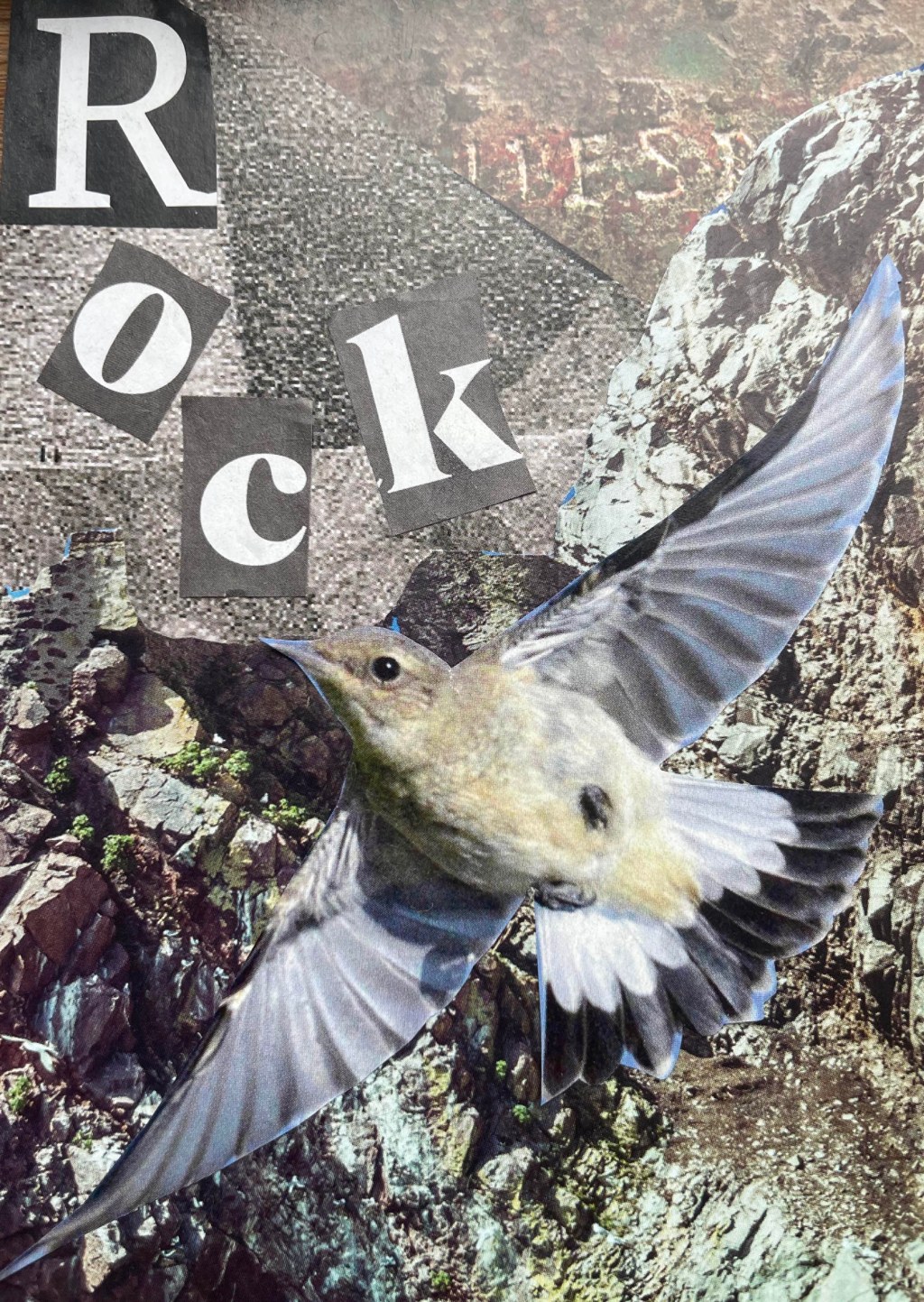Introduction
Post Sense, is a personal project ignited by an interest in Mail Art and represents part of my MA Fine Art research, which explores how we can become more emobodied in landscape through our senses, as a way of discovering a greater sense of connection.
Mail Art was a popular art movement which centered on sending small scale art works through the postal system. Drawing inspiration from the distinctive collages of Ray Johnson I embarked on a journey to create collaged postcards using recycled magazines, aligning with the simplicity valued in the Fluxus movement of the 50’s and 60’s, which Mail Art grew out of.
I collaged images that connected to landscape, history and place. I drew reference from some specific Lundy sites such as; The Lost and Forgotten Heinkels, Marisco Castle and the Kights Templar. I also found inspiration from Artist Postcards featured in a compendium by Cooper J (2012) taking ideas from featured artists such as; David Hockney and Max Ernst. These will all be featured in a book alongside photographs of posting the card in the letterbox and its response.



Lundy Letterboxing
Letterboxing started on Dartmoor and is now enjoyed on Lundy. The hidden boxes have clues to follow and once you find a letterbox it contains a rubber stamp, you need to collect all the letterbox stamps in a book to complete the challenge. Over several months, I regularly walked to place them in one of the 28 hidden letterboxes, located around the 3 mile long island.






Many were not easy to find and it was normal for me to find it once, then to return only to forget where it was! You can see from my GPS location tracking that sometimes the boxes were a challenge to find.


I used the postcards as research for my MA project, to find out how people used their senses to feel embodied in the landscape. To do this I asked finders to write on the reverse of the card, which of their senses was most heightened whilst in the Lundy landscape.
Returned Postcards
I had pre-stamped the cards, to help increase their chance of being returned. Once the finder had written on the card, I asked them to post them using the private Lundy Postal system to an address on the Mainland. In total I posted 70 cards of which 68 have been returned, which is an excellent response rate and demontrates the amount of engagement with the project.
The content of the returned cards exhibited a wide range of responses, but overall the responses generally aligned with expectations, with sight being the most frequently referenced sense. Responses ranged from succinct single words like ‘seeing’ to double words like ‘spectacular views’ to more elaborate responses that encapsulated multiple senses. For instance, one postcard vividly described, ‘hearing sheep, puffins, goats, smelling the sea, touching the rocks, hearing the wind, tasting the food, feeling the salt in the air, and seeing amazing views.’ Sound also played a significant role, with mentions of ‘crashing waves against rocks’ and the ‘sound of ringing bells.’ Touch-related experiences were shared, describing the battering wind and rain on their faces and bodies. Some cards bore the personal stamp of the finder, echoing the Fluxus art movements love of the rubber stamp.



Interestingly, a couple of respondents referred to senses beyond the traditional five, with one mentioning a spiritual sense, a sentiment echoed by Kumar (2009) who says ‘I can sense the sacred all around me’ (pg 22). Surprisingly, no one reported a sixth sense, as mentioned by Thompson (2022) (pg 287) and Gooley (2014) (pg 49), referring to ‘Proprioception,’ the sense of position and movement of our limbs. Notably, fewer responses delved into the less emphasised senses of touch, smell, and taste. However, those that did described the ‘firm texture of rocks,’ the ‘smoothness of small stones,’ the ‘noticeable smell of clean, unpolluted air’, and the taste of salt in the air.’
Exhibition
The postcards are currently showcased as a unified display in St. Helens Church on Lundy. This exhibition goes beyond visual appreciation, as the interactive nature of the hanging installation invites visitors to engage by touching and reading the postcards. You can experience this exhibition until January 1st, 2024.
Conclusion
Post Sense is a remarkable embodiment of the inherent strength found in communal art sharing, exemplifying the enriching bond between artistic expression and the distinctive spirit of Lundy Island. This extraordinary project not only captures the island’s inherent beauty but also fosters a profound exploration of the senses, truly immersing and engaging all who encounter it.
A beautiful book featuring all the postcards, along with photographs capturing the letterboxes they were placed in, will soon be available. If you’re interested in purchasing a copy, please contact Jane.sharkey@live.co.uk.
